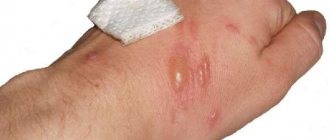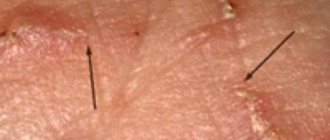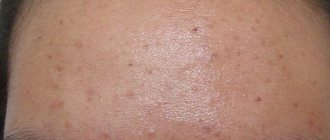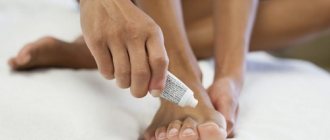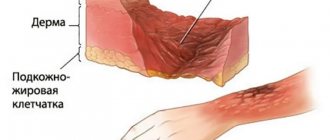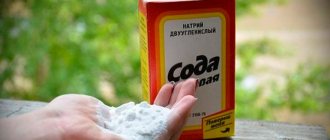Dimexide (dimethyl sulfoxide) is a concentrate for topical use that has an analgesic, anti-inflammatory, and absorbable effect. The medicine penetrates well into the deep structures of the dermis and is often used as lotions or compresses. But the drug must be used with caution and only in diluted form, otherwise you can get burned by Dimexide.
What is Dimexide used for?
The drug is prescribed for problems with the functioning of the musculoskeletal system. In addition, in case of subcutaneous damage to soft tissues, Dimexide actively relieves the inflammatory process. The ability of the drug to enhance the effect of other drugs is often used by doctors in antibacterial therapy. Direct indications for prescribing Dimexide are:
- bursitis;
- arthrosis;
- arthritis;
- radiculitis;
- gout;
- osteochondrosis;
- pain syndrome due to intervertebral hernia;
- scleroderma;
- skin ulcers;
- swelling accompanied by pain;
- synovitis
In addition to the above problems, Dimexide is also used in other areas, including cosmetology.
What is Dimexide
Dimexide is an effective and affordable drug used in various fields of medicine. Concentrate:
- promotes healing of wounds and trophic ulcers;
- reduces inflammation in joints with arthrosis and arthritis, neuralgia, gout;
- helps with bruises and sprains;
- used in dermatology for the treatment of eczema, furunculosis, lupus erythematosus, scleroderma, acne;
- prescribed by dentists for the treatment of pulpitis and periodontitis;
- used in cosmetology for resorption of keloid scars, preparation of face masks against wrinkles.
The drug quickly passes through biological membranes, and in combination with other medications ensures their penetration into the deep layers of the skin.
How to dilute Dimexide for hair
As a result of the fact that Dimexide was seen as a kind of catalyst for some local drugs, which quickly penetrated the cellular barrier deep into the tissues, Dimexide began to be used as part of cosmetic masks.
In particular, by mixing a teaspoon of the substance concentrate with essential oils, lemon juice, aloe extract and honey, you get an effective hair mask. Its regular use relieves hair from brittleness, gives rich shine and restores natural growth. And if you mix a teaspoon of Dimexide with ground red pepper and apply it to the scalp, holding for 15 minutes, you can wake up dormant bulbs, resulting in thicker curls.
What to do if you develop an allergy to a drug
If an acute allergic reaction develops, you should immediately call an ambulance. Describe the patient’s condition to the dispatcher and give the correct address. While waiting for doctors, you need to begin to provide first aid to the victim yourself. Below are its main components:
- Thoroughly rinse any remaining product from the skin.
- Open the windows in the room in which the patient is located, and make sure that no items of clothing interfere with his breathing.
- If you have antihistamines (anti-allergic) drugs in your home medicine cabinet, give them to the patient to drink. In this case, you must strictly follow the dosage rules specified in the instructions.
- If poisoning has developed as a result of taking the drug orally, you need to give the poisoned person to drink several glasses of water and then induce vomiting. Then the patient needs to take a sorbent, for example, activated carbon, or enterosgel.
The ambulance team, upon arriving at the call, will examine the patient and determine the severity of his condition. For angioedema, the following drugs are administered intravenously:
- antihistamines, for example, diphenhydramine or suprastin.
- corticosteroids - dexamethasone or prednisolone.
If the patient’s condition does not improve after the medications are administered, he is taken to the nearest on-duty hospital to the therapy department.
How to dilute Dimexide for boils
Inflammation of the skin glands, which develop into boils, is often accompanied by a local increase in temperature and tension on the skin surface. In order to relieve pain and reduce tissue tension due to growing inflammation, dilute Dimexide in warm water in the proportion of 1 ml of concentrate per 10 ml of clean water. Cotton pads are soaked in the resulting solution and applied to the boils. It is important not to rub, rub, or knead an unruptured boil. Safe use is considered to be simply applying a moistened swab to the inflamed area.
First aid
To prevent deep damage, if severe burning and painful sensations occur, you should immediately:
- rinse off the medicine with cool running water (rinse for at least 15-20 minutes);
- very carefully blot the skin with a napkin;
- cover the damaged area with a sterile bandage;
- take a pain reliever (Analgin, Ketanov, Ibuprom, Nise) if the pain is severe and does not go away;
- contact a doctor who will determine the extent of the damage and, taking this into account, will advise how to treat the burn.
If you receive a burn from Dimexide, it is prohibited:
- wipe the solution with a towel, cotton pads, napkins (these actions will lead to even greater tissue damage and an increase in the burn area);
- apply ice to the damaged area;
- treat the wound with a solution of potassium permanganate, alcohol tinctures, fatty creams and oils, fermented milk products;
- apply leaves of medicinal plants to the burn;
- use non-sterile materials, cotton wool, to treat the burn;
- cover the damaged area with a plaster;
- apply too tight an antiseptic bandage;
- pierce blisters, remove crusts.
Incorrect actions when providing first aid will aggravate the situation and can cause the development of post-burn complications: purulent inflammation, the formation of scars.
How to dilute Dimexide for heel spurs
The situation with inflammation of the heel, called a heel spur, can be resolved not only through surgery. In some situations, a conservative method using Dimexide may help. It is important to begin treatment at the first signs of inflammation in order to prevent the disease from entering an irreversible phase when the help of a surgeon is required. For spurs, use a concentration of Dimexide diluted in water in a one to one ratio. Taking 20 ml of the drug you need to add 20 ml of water.
For severe pain, novocaine 2% is added to the solution in a volume equal to the amount of Dimexide and water. A cloth is moistened in the resulting liquid and placed on the sore spot. The compress is covered with polyethylene and a wool sock is put on.
Correct dosage of the drug
- For trophic skin ulcers, a thirty percent solution in an amount of 50-100 milliliters is applied to the area of the pathological process twice or thrice a day.
- For pustular skin pathology (boils, carbuncles), a forty percent solution is used.
- For scleroderma - compresses with a forty to fifty percent solution.
- For the purpose of pain relief for pathologies of the structures of the musculoskeletal system, it is worth applying a compress with a twenty percent solution twice a day for 20 minutes.
- When a patient undergoes skin transplantation, a compress with a ten percent solution is applied to the surgical area.
- For deep burns of the skin and soft tissues, bandages with a twenty percent solution are used.
- If the product needs to be used on sensitive areas such as the face and eyelids or for washing purulent cavities with soft tissue abscesses, a dimexide solution with a lower concentration is used - about ten percent.
Dimexide for sinusitis
Sinusitis is an inflammation of the maxillary sinuses, accompanied by an accumulation of mucus pressing on the nasal cartilage from the inside. The disease may be accompanied by redness of the skin over the sinuses, as well as an increase in temperature, which is localized in the area of the inflammatory process. Dimexide will help relieve swelling of the mucous membranes and reduce inflammation in the nasal passages. It is mixed with saline solution in a ratio of 1:3.
You can also add aloe juice or vasoconstrictor nasal drops, for example, naphthyzine or phenylephrine. After moistening cotton swabs in the resulting solution, they are inserted into each nasal passage and kept in this position for up to 20 minutes. This treatment can be repeated for up to 7 days in a row.
Recommendations
Read the instructions on your medication package inserts very carefully. This will help protect you from unwanted consequences, correctly calculate the dosage and get the desired result.
If you do get a burn, follow all the above recommendations. With proper treatment, the resulting wound heals within 5-7 days after it occurs. Any chemical burn is initially neutralized with ordinary water, and the affected location must be protected from exposure to the external environment.
Adverse reactions
The use of Dimexide, like any other drug, can lead to unpleasant side reactions. Among them:
- redness of skin areas;
- burning in the area of application;
- allergic reactions, manifested by nasal congestion, drainage from the eyes, bronchospasm and rhinitis;
- skin pigmentation;
- nausea;
- muscle weakness;
- dizziness;
At the first signs of illness as a result of using Dimexide, you should definitely stop therapy and discuss what happened with your doctor.
How do you know if you have a burn?
Symptoms may be the following: a feeling of pain, the skin turns red, wrinkles, becomes white, itching, burning appears, then various rashes, blisters and scabs appear. There is general malaise and fever. The symptoms are more noticeable and severe the higher the degree of burn.
What are the degrees of burn?
To know exactly what degree of burn you have, a surgeon or traumatologist will help you. In case of severe pain, severe pain, or an allergic reaction, you must call an ambulance.
- If you have a first-degree burn, the skin will be slightly red and swollen and itchy, and you will not experience symptoms such as blisters or scabs. You can treat a burn at home using the solutions and ointments listed below, and wash off Dimexide with running water for 10-15 minutes. The water temperature should be at least 12 degrees.
- In the second degree, in addition to redness, blisters with yellow liquid appear, which eventually burst, exposing the wound. Treatment will last about ten days, no scar will form.
- The third degree of burn is the necrosis of areas of the skin, the appearance of a dark-colored scab.
There is no fourth degree from Dimexide.
Treatment of burns with medications
To treat burns with dimexide, the following medications are primarily used:
- Preparations based on liquid chlorophyll can neutralize the negative effects of dimexide. External use of these drugs promotes the regeneration of damaged tissues and has a bactericidal effect. In addition, they help neutralize toxins and stop inflammatory processes;
- Panthenol is suitable for treating burns - one of the best anti-inflammatory and anti-burn agents today. The burned area must be washed with portage water (all residues of dimexide must be washed off), and then a bandage with Panthenol must be applied;
- Olazol also perfectly helps relieve burn symptoms. The method of application is the same as for panthenol;
- If the lesions are not very severe, the burn with dimexide can be treated with zinc paste;
- For severe burns, you can use Hydrocortisone or Prednisolone ointment. However, this should only be done under the supervision of a doctor, since both drugs can cause complications;
- Solcoseryl has proven itself well in the treatment of burns from dimexide. In the first stages, you can use a gel, but during subsequent treatment it is better to use an ointment.
- No matter how paradoxical it may sound, burns from dimexide can be treated with dimexide itself. Only this time you need to follow the instructions exactly.
Regardless of how you decide to treat the burn, it is important to remember that dimexide promotes the penetration into the blood of those substances with which it interacts, so it is necessary to protect the affected area from contact with non-sterile objects - otherwise you can get an infection, which will significantly complicate the situation.
Symptoms of skin damage from the drug
The symptoms of a skin burn with Dimexide are not specific, since the product itself belongs to an intermediate class of chemical substances that are conditionally dangerous to the epithelium and exhibits the properties of both alkali and acid in special cases. Possible primary symptoms:
- Severe itching and redness of the skin (a burn with Dimexide is shown in the photo);
- Formation of increasing pain syndrome;
- Hyperemia of the skin.
With the development of moderate and severe degrees of chemical burn after using Dimexide, the following signs are observed:
- The appearance of blisters with clear or serous contents;
- Formation of a scab with a loose internal structure or a dry hard crust;
- Systemic pathological reactions. Dizziness, weakness, changes in heart rate, blood pressure, dyspeptic disorders and so on. They are formed as a consequence of toxemia of the body, a response autoimmune process and other generalized problems, which in most cases require mandatory hospitalization of a person in a hospital and complex intensive care.
Correct care
In addition to information about what to do in case of a burn with Dimexide, it is also important to know the following nuances:
- use only clean materials for dressings and compresses;
- do not treat the burn with cotton wool or a non-sterile bandage;
- medicinal gels are allowed to be used at the early stage of a burn, ointments - during the recovery period;
- Do not remove the formed crust yourself and do not damage the bubbles;
- minimize contact of the burn with any surfaces;
- Do not cool the wound with ice.
Types of burns
There are three levels of burns: first degree, second and third.
- First degree burns are a type of burn on the top layer of skin that cause minimal damage to the skin.
- Second Degree Burns – This type of burn is severe and damages deeper than the top layer of skin.
- Third degree burns are a type of burn that deeply damages the layers of skin.
Symptoms of burns:
- Redness of the skin.
- Blisters on the skin.
- Pain.
- Swelling.
Causes of burns:
- Chemical burn.
- Electric.
- Thermal.
- Excessive tanning.

